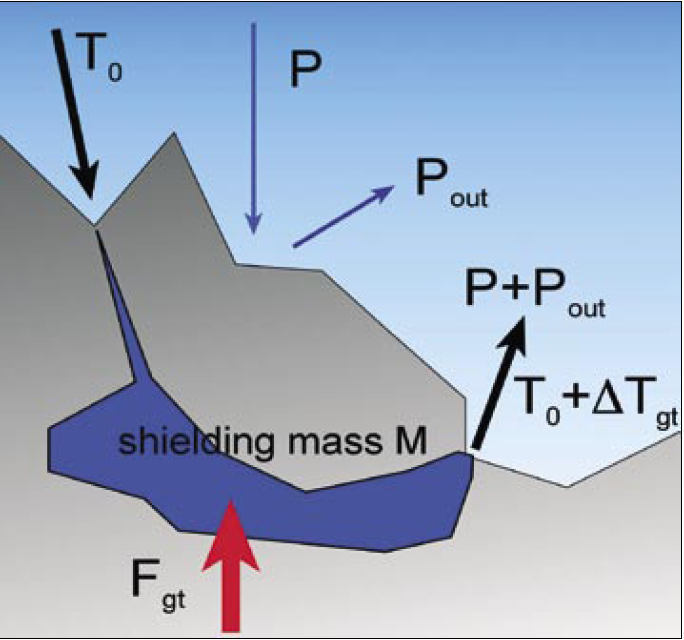Underground Drainage Systems and Geothermal Flux
DOI:
https://doi.org/10.3986/ac.v34i2.261Povzetek
V članku opišem pomen interakcije med geotermičnim tokom in mrežo globokega kraškega odvodnjavanja. Problem geotermičnega toka, ki ga prestrežejo vodni kanali, ki v splošnem zaheva tudi izračun temperaturnega polja, obravnavam z inženirskim pristopom, ki pri tem vpelje t.i. faktorje oblike. Tok vode v kraških kanalih zmoti celotno temperaturno polje v okoliškem masivu in sčasoma pritegne nase ves geotermični tok širšega območja. Že majhna količina vode, ki teče v masiv, zmoti temperaturno polje masiva vse do površja. Vpeljava geotermičnega preseka struktur podzemnega odvodnjavanja, omogoča izboljšanje klasične formule za oceno minimalne globine vira geotermalne vode. Tej dodamo faktor povečave, ki je odvisen od razmerja med povprečnim in kritičnim pretokom Qc, ki ga določa geotermični presek. V članku opišem tudi geotermične »stožce senčenja«, ki nastanejo v masivu nad kraškimi kanali.
An analysis of the interaction between the geothermal flux and the water or air- deep drainage networks. The problem of geothermal power intercepted by deep structures and, in general, the temperature field calculations, is converted to classical thermo-engineering problems in terms of shape factors. It is shown that the fluid flow in a conduit perturbs the whole deep rock temperature field until the geothermal flux of a large area is focalised onto the conduit. It is shown that either small water masses flowing into a mountain are able to perturb the rock temperature up to the surface, on sizes that do not depend on water mass dimension, but on its depth, and then on enormous volumes. The introduction of the "geothermal cross section" of an underground drainage structure allows us to improve the classical formula of minimum provenance depth of geothermal water. Enlarging factors are applied to the classical estimation in dependence of the ratio between the actual average discharge and the critical discharge Qc, which depends on the conduit geothermal cross section. The geothermal "umbra cones"created in the overlying rock by deep underground structures are described. It is shown that the geothermal flux can play a significant role in the underground drainage phenomenology.
Prenosi

Prenosi
Objavljeno
Kako citirati
Številka
Rubrike
Licenca
Avtorji jamčijo, da je delo njihova avtorska stvaritev, da v njem niso kršene avtorske pravice tretjih oseb ali kake druge pravice. V primeru zahtevkov tretjih oseb se avtorji zavezujejo, da bodo varovali interese založnika ter da bodo povrnili morebitno škodo.
Podrobneje v rubriki: Prispevki




